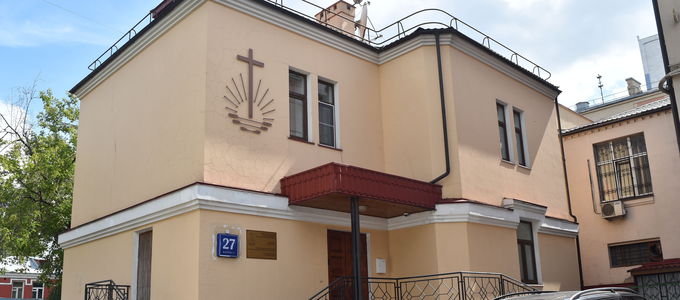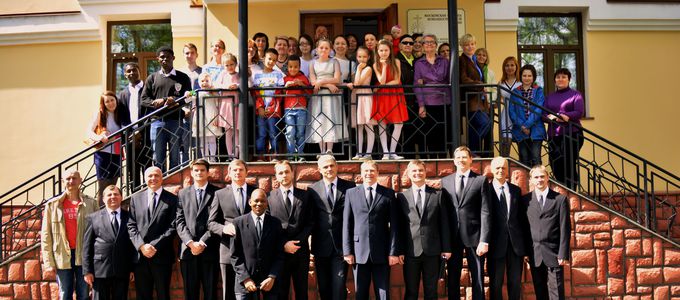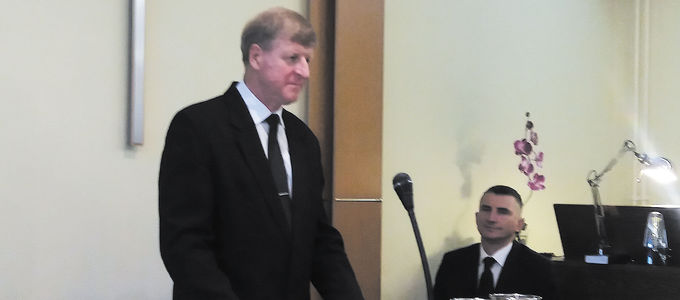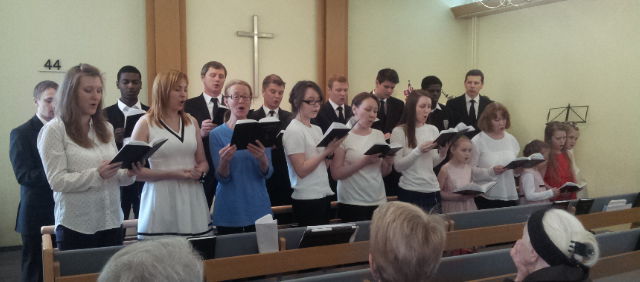
A gigantic country with a long history and a lot of people between hope and wealth—in terms of area, Russia is the largest country in the world. Its mighty capital is Moscow. The New Apostolic congregation there is comparatively small, but young and active.
The national territory of the Russian Federation incorporates seventeen million square kilometres. This represents eleven percent of the world’s surface area, which makes Russia approximately the same size as Australia and Europe combined. The famous Trans-Siberian Railway extends for 9,000 kilometres, eastward from Moscow through the entire Asiatic portion of Russia, before ending at the port city of Vladivostok on the Pacific. Without intermediate stops, the entire journey takes a whopping 152 hours and 27 minutes. From north to south, the borders are also at quite a distance from one another, covering some 4,000 kilometres between them.
And yet, with its approximately 144 million people, the enormous country is only sparsely populated, at least in the Asiatic portion. Two thirds of its population live in the European part of the country. Russia is also home to 190 different ethnic groups. Although Russian is the official language of the country, there are another 27 official languages in the various regions of the country.
The thing that makes Russia so special is its wealth of traditions and interesting myths. For example, Russians never shake hands over a threshold. This would be a bad omen, and most Russians are convinced that such a thing would lead to a dispute. And in Russia, men never give women an even number of flowers, as this would be considered bad luck.
Moscow: big metropolis and little mother
Moscow is the capital of Russia. It is among the larger metropolises of the world—as modern and beautiful as it is historic and venerable. After all, the city on the Moskva is around 900 years old. It is the undisputed political, economic, and cultural heart of the country.
Interesting museums and exhibitions of classical and modern art—the city has it all. All through the year, Muscovites find themselves celebrating one holiday or another. One of these is the city’s birthday on the first weekend of September.
Over twelve million people live here—a total of fifteen million in the metropolitan area. Umpteen million tourists join the fray every year as well. Some of them see Moscow as majestic, extravagant, and dynamic, while others find the city pretentious and hectic. Many Russians in other cities of the country—and in the nation’s villages in particular—are envious of the city. All they see are the city’s rich and interesting lifestyles, many jobs, and loads of money. Moscow is home to 74 billionaires, after all—more than any other city in the world.
Moscow’s subway system is also quite impressive. Apart from being architecturally extravagant it is the most rapid in the world. During peak hours, the trains run at 90-second intervals, transporting over nine million passengers every day.
And what would Russia be without the church? Its history is old, but its traditions are very much alive. Many beautiful Orthodox churches and cathedrals testify of the fact that the Russian Orthodox Church still reigns supreme. However, Moscow also boasts Catholic churches, Jewish synagogues, Islamic mosques, and Buddhist temples. It is not for nothing that Moscow is called the centre of all world religions.
The New Apostolic congregation in Moscow
Today there is only one New Apostolic congregation in Moscow. Before the Russian Revolution in 1917 there were several congregations. However, these were closed by state decree. It was only in 1991 that the administrative centre of the New Apostolic Church in Russia—with its seat in Moscow—was officially registered. Thereafter there were again four New Apostolic congregations in Moscow and the surrounding area. Two of these were in the care of the New Apostolic Church in Switzerland, while the other two were in the care of Berlin-Brandenburg. After 1998 only one congregation remained in Moscow. Since 2005, divine services in Moscow have been conducted exclusively by Russian ministers. The only exception are those services conducted by District Apostle Wolfgang Nadolny.
Varshavskoye Sh. 27/1 (Nagatinskaya metro station), Moscow: this is the address of the city’s New Apostolic congregation. Divine services there take place at 10 a.m. on Sundays. At present, the congregation is home to over 200 members, which include the District Elder, a District Evangelist, two Evangelists, five Priests, and eight Deacons.
Many young members attend the divine services. They come from all over—the Congo, Mozambique, Kazakhstan, Belarus, and the Ukraine—because they are studying at one of Moscow’s universities. They keep the congregation lively and active.
There is a Sunday School, a four-part choir, and an active youth group. Congregational and youth events take place on a regular basis, especially on Church holy days. For these, the choir and youth usually prepare a little concert programme, and the members of the congregation bring tea and coffee. And, as is customary in Russia, the tables are also richly laden on these occasions.














